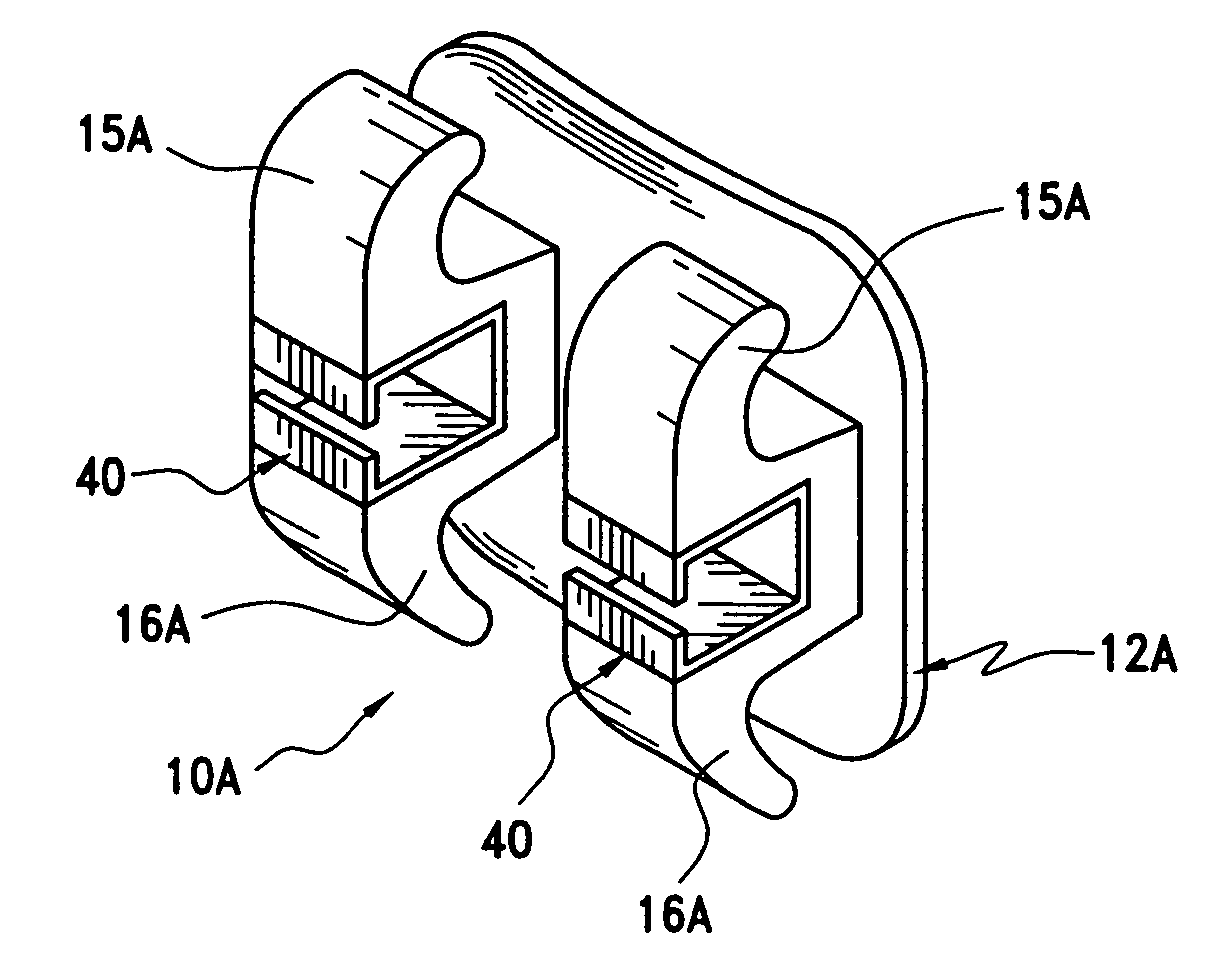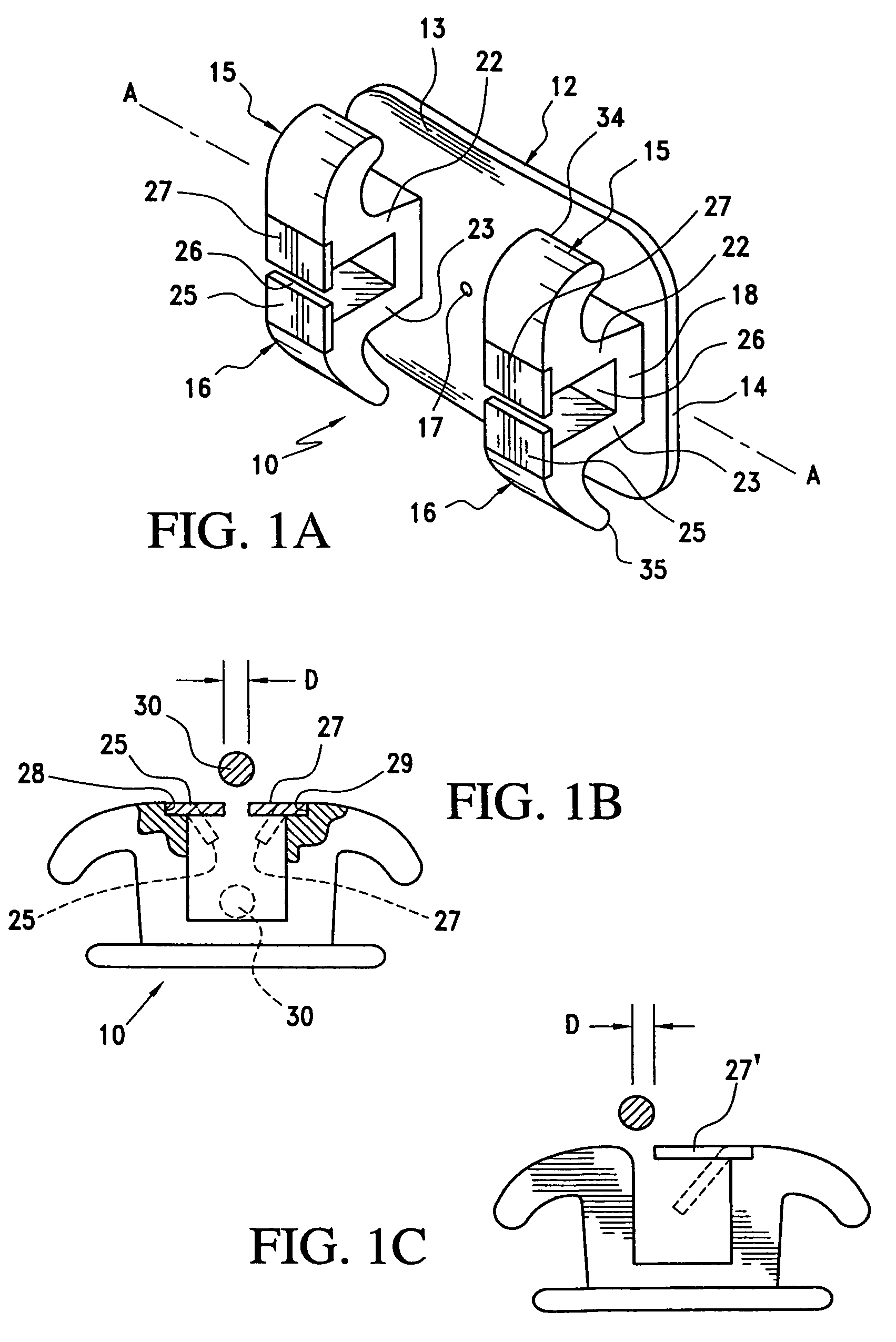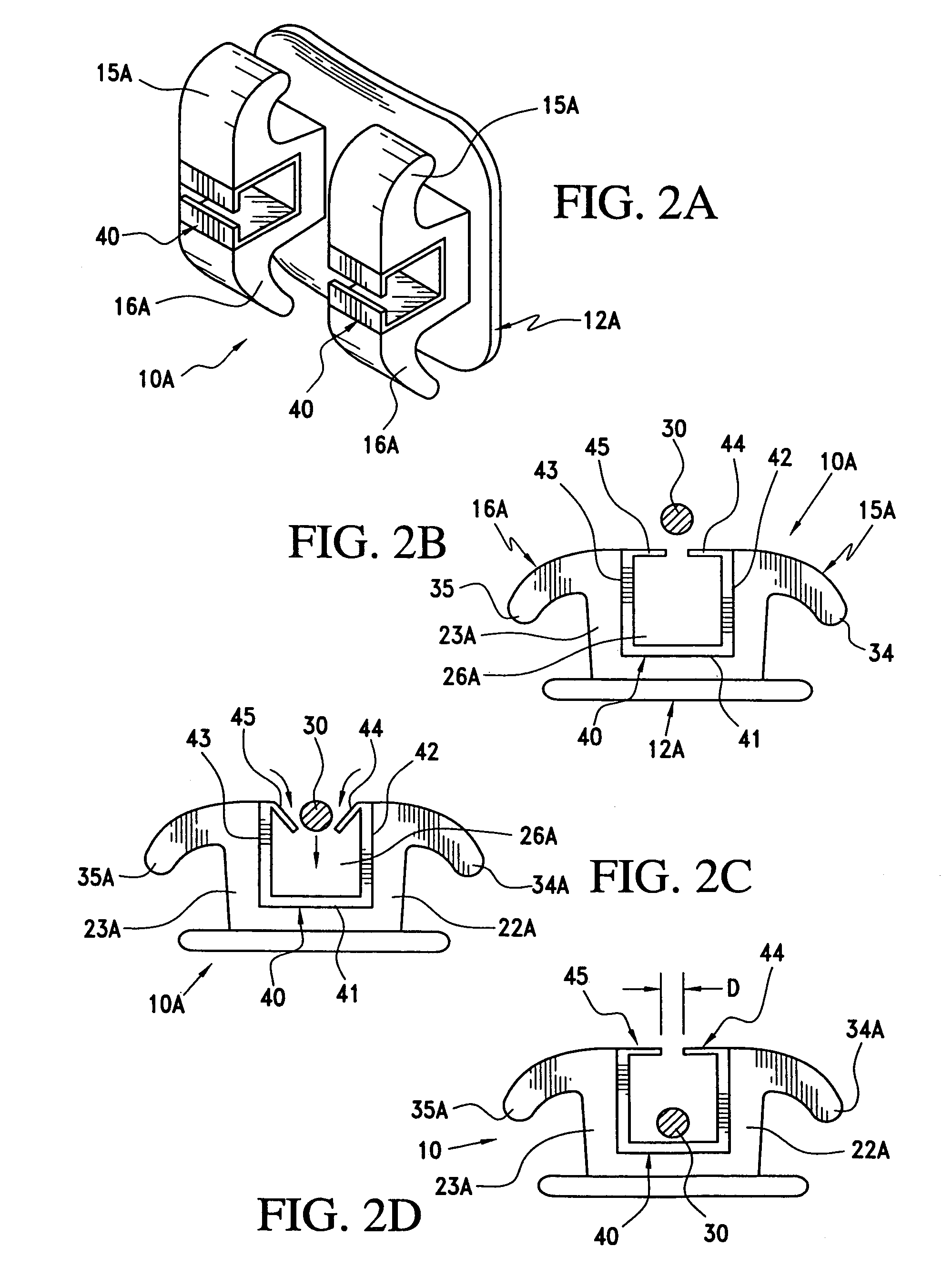Shape memory self-ligating orthodontic brackets
a self-ligating, orthodontic technology, applied in the field of orthodontic brackets, can solve the problems of increasing bracket costs and size, reducing bracket aesthetics, and providing additional structure, and reducing the aesthetics of brackets, so as to facilitate the sliding movement of archwires, enhance the aesthetic appearance of orthodontic brackets, and reduce friction.
- Summary
- Abstract
- Description
- Claims
- Application Information
AI Technical Summary
Benefits of technology
Problems solved by technology
Method used
Image
Examples
Embodiment Construction
[0053]With continued reference to drawing FIGS. 1A-1C, a first embodiment of orthodontic bracket 10 of the present invention includes a contoured base 12 having a front surface 13 and tooth engaging surface 14. The rear surface 14 is generally slightly concavely contoured so as to match the surface contour of a patient's tooth.
[0054]The orthodontic bracket further includes two pair of spaced opposing tie wings 15 and 16 which are shown as being spaced on opposite sides of a central recess 17 which is formed generally centrally of the front surface of the bracket base 12. The recess 17 is used to facilitate alignment of the bracket relative to a patient's tooth using an instrument such as a Boone gauge. As opposed to the recess 17, a linear groove may be provided in the front surface 13 of the bracket base for facilitating alignment, see the embodiment of FIG. 4B at 17B.
[0055]Each pair of tie wings includes a base portion 18 from which extend posts 22 and 23. The generally parallel p...
PUM
 Login to View More
Login to View More Abstract
Description
Claims
Application Information
 Login to View More
Login to View More - R&D
- Intellectual Property
- Life Sciences
- Materials
- Tech Scout
- Unparalleled Data Quality
- Higher Quality Content
- 60% Fewer Hallucinations
Browse by: Latest US Patents, China's latest patents, Technical Efficacy Thesaurus, Application Domain, Technology Topic, Popular Technical Reports.
© 2025 PatSnap. All rights reserved.Legal|Privacy policy|Modern Slavery Act Transparency Statement|Sitemap|About US| Contact US: help@patsnap.com



